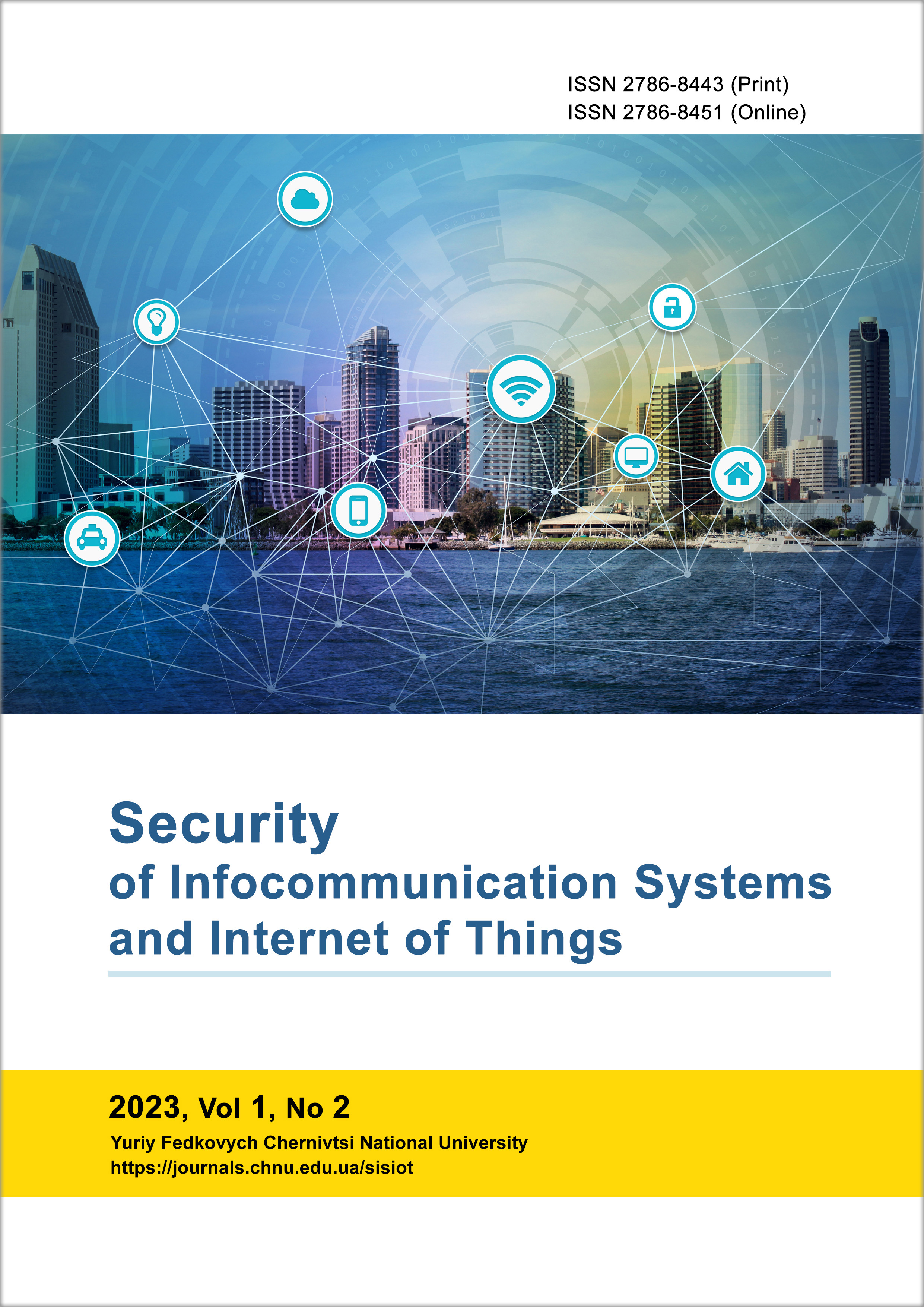Information Security and Telecommunications Prospects of Machine-Learning-Based Methods in Chaotic Systems
DOI:
https://doi.org/10.31861/sisiot2023.2.02009Keywords:
machine learning, reservoir computing, chaotic system, telecommunicationsAbstract
In the dynamic landscape of information security and telecommunications, this paper delves into the multifaceted realm of machine-learning-based methods, with a particular focus on their application in chaotic systems. An informative introduction sets the way for a thorough examination of the major benefits provided by reservoir computing (RC) and machine learning (ML) in telecommunications. The first segment of this study scrutinizes the role of machine learning in fortifying information security. With the ever-evolving nature of cyber threats, understanding the nuances of ML becomes imperative. The article highlights key advancements and features in ML that contribute to bolstering data security, providing a nuanced perspective on its efficacy in addressing the intricate challenges posed by contemporary paradigms for information security. Moving forward, the discussion expands to reservoir computing and its implications in telecommunications. Reservoir computing, with its unique approach to processing information through dynamic systems, has emerged as a promising technique. The article dissects its applications in the telecommunications sector, shedding light on how reservoir computing augments information processing and transmission efficiency within complex networks. A pivotal aspect of this paper is the exploration of the double-reservoir solution — a cutting-edge approach that combines the strengths of reservoir computing for enhanced performance. This innovative solution is dissected in detail, uncovering its prospects and the challenges it presents. The incorporation of double-reservoir solutions into chaotic systems represents a paradigm shift in the optimization of system dynamics and represents a major advancement in tackling important telecommunications difficulties. Yet not just this paper offers insights into this solution, it fairly describes possible challenges with implementation of such a model. It is to be taken into consideration, hence there is no ‘perfect’ solution for such a complex problem. This paper provides a comprehensive view of machine-learning-based solutions for information security and telecommunications challenges. By unraveling the capabilities of both machine learning and reservoir computing, it unlocks avenues for further research and development in harnessing these technologies to fortify the foundations of secure and efficient telecommunications in the face of constantly developing threats. The insights presented herein lay the groundwork for future innovations, urging researchers and practitioners to delve deeper into the synergy of machine learning and chaotic systems for transformative advancements in these critical domains.
Downloads
References
J. Boiko, I. Pyatin, O. Eromenko and O. Barabash "Methodology for Assessing Synchronization Conditions in Telecommunication Devices". advances in Science Technology and Engineering Systems Journal, vol. 5, no. 2, pp. 320-327, March 2020.
O. Semenova, A. Semenov, O. Voznyak, D. Mostoviy and I. Dudatyev, "The fuzzy-controller for WiMAX networks". in 2015 International Siberian Conference on Control and Communications (SIBCON), 2015, pp. 1-4, doi: 10.1109/SIBCON.2015.7147214.
M. Sakurada, T. Yairi "Anomaly Detection Using Autoencoders with Nonlinear Dimensionality Reduction". Proceedings of the MLSDA 2014 2nd Workshop on Machine Learning for Sensory Data Analysis. Gold Coast, Australia QLD, Australia: ACM Press. pp. 4–11.
C. Liou, J. Huang, W. Yang. "Modeling word perception using the Elman network". Neurocomputing, Volume 71, Issues 16–18, pp. 3150-3157, 2008.
B. Schrauwen, D. Verstraeten, and J. V. Campenhout. "An overview of reservoir computing: theory, applications, and implementations". Proceedings of the European Symposium on Artificial Neural Networks, ESANN 2007, pp. 471–482.
Kramer, Mark A. "Nonlinear principal component analysis using auto-associative neural networks". AIChE Journal. № 37, vol. 2, pp. 233–243, 1991.
C. Gallicchio, A. Micheli, L. Pedrelli, Deep reservoir computing: A critical experimental analysis, Neurocomputing, Volume 268, pp. 87-99, 2017.
F. Sabahi and A. Movaghar, "Intrusion Detection: A Survey", Third International Conference on Systems and Networks Communications, Sliema, Malta, 2008, pp. 23-26.
S. Hawkins, H. He, G. Williams and R. Baxter "Outlier Detection Using Replicator Neural Networks". Data Warehousing and Knowledge Discovery. Lecture Notes in Computer Science. Vol. 2454. pp. 170–180, 2002.
F. T. Liu, K. M. Ting, and Z. Zhou "Isolation Forest". Eighth IEEE International Conference on Data Mining. pp. 413–422, December 2008.
Published
Issue
Section
License
Copyright (c) 2023 Security of Infocommunication Systems and Internet of Things

This work is licensed under a Creative Commons Attribution 4.0 International License.









